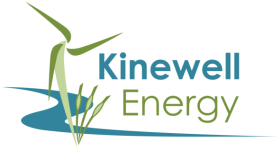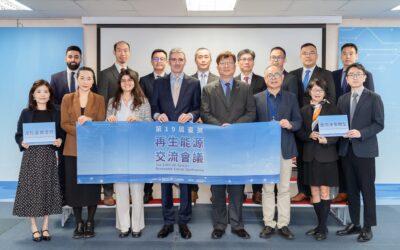UK Government-backed software helping increase the energy production of wind farms was today [12 Oct] unveiled at a leading energy conference in Japan.
Taking to the stage at the Global Offshore Wind Summit in Fukuoka, cleantech energy scale-up Kinewell Energy officially launched its latest software solution, Kinewell Wake Optimised Turbine Arrangement (KWOTA), to energy leaders from across the globe.
Developed with funding from InnovateUK, the cloud-based software uses AI-powered technology to calculate the best position of offshore wind turbines, helping to maximise energy yields by reducing wake losses.
Wake losses – which occur when turbines extract energy from the wind, causing turbines directly downstream to experience slower wind speeds – are one of the major causes of energy loss from wind farms.
Kinewell Energy’s new KWOTA software maximises the value of offshore wind projects and lowers the levelized cost of electricity (LCoE), by choosing turbine locations that minimise CAPEX and reduce wake losses, which can limit energy production by 10-20%.
The unique KWOTA technology rapidly develops optimised turbine layouts, delivering significant productivity gains for the engineers developing offshore wind farms, and helps de-risk key decisions like turbine types and overplanting.
“The KWOTA software uses AI-powered technology to rapidly calculate the most strategic positions to place wind turbines and has the potential to be a real game-changer for the industry,” said Dr Andrew Jenkins, founder of Kinewell Energy.
“Optimising the best turbine locations considering wake losses is computationally expensive and legacy software can take substantial periods of time to deliver the answers. Our KWOTA technology is fast, very fast, and significantly reduces calculation times. This allows engineers to undertake more extensive scenario modelling and make better decisions that reduce the levelized cost of electricity (LCoE).
“The fact that it is cloud-based also means that, unlike most other products, it can be accessed and used from any location by engineers. This is particularly important as the world becomes more dynamic and the post-pandemic ‘work-from-anywhere’ culture. It is suitable for all offshore wind markets, including the US with its pre-defined turbine location grids. It’s a globally scalable solution.”
Dr Jenkins also believes that the software, which could help large offshore wind farms generate millions of pounds in extra revenue over the course of their lifetime, will also help encourage more developers to invest in clean energy projects.
“The launch of KWOTA comes at what is a critical juncture for the industry,” he added. “With rising costs deterring developers from taking on new projects, as we’ve seen in recent months in the UK, the gains achieved by this technology could be crucial.
“Industrial scale wind-powered energy has a major role to play in helping us achieve Net Zero. However, to deploy the vast quantities of offshore wind required in the time demanded by climate science to limit warming to no more than 1.5°C, requires transformational innovation to deliver projects faster and cheaper – and KWOTA does just that.”
Kinewell Energy’s attendance at the Global Offshore Wind Summit was facilitated by a trade mission to East Asia organised by the UK Government’s Department for Business and Trade, which saw the company visit trade shows and energy providers in Japan, South Korea, Taiwan and Vietnam.
Darren Goff, Director of Trade and Investment Japan; Deputy Trade Commissioner North East Asia, said: “We support UK offshore wind companies sharing their expertise and experience with Japanese stakeholders to support Japan’s Green transition. It is great to have Kinewell as one of the presenters at the Global Offshore Wind Summit in Kitakyushu, showcasing British innovation to the world.”
The development of KWOTA was supported by funding from the Innovate UK FastStart programme. The aim of the programme was to provide a package of targeted support to enable UK micro and small businesses working in the net-zero or healthcare space to reach their potential. To attract funding, projects had to lead to new products, processes or services that are significantly ahead of others currently available, or propose an innovative use of existing products, processes or services.

![Kinewell KWOTA launch w delegates 004[15]](https://kinewell.co.uk/wp-content/uploads/2023/10/Kinewell-KWOTA-launch-w-delegates-00415.jpeg)


